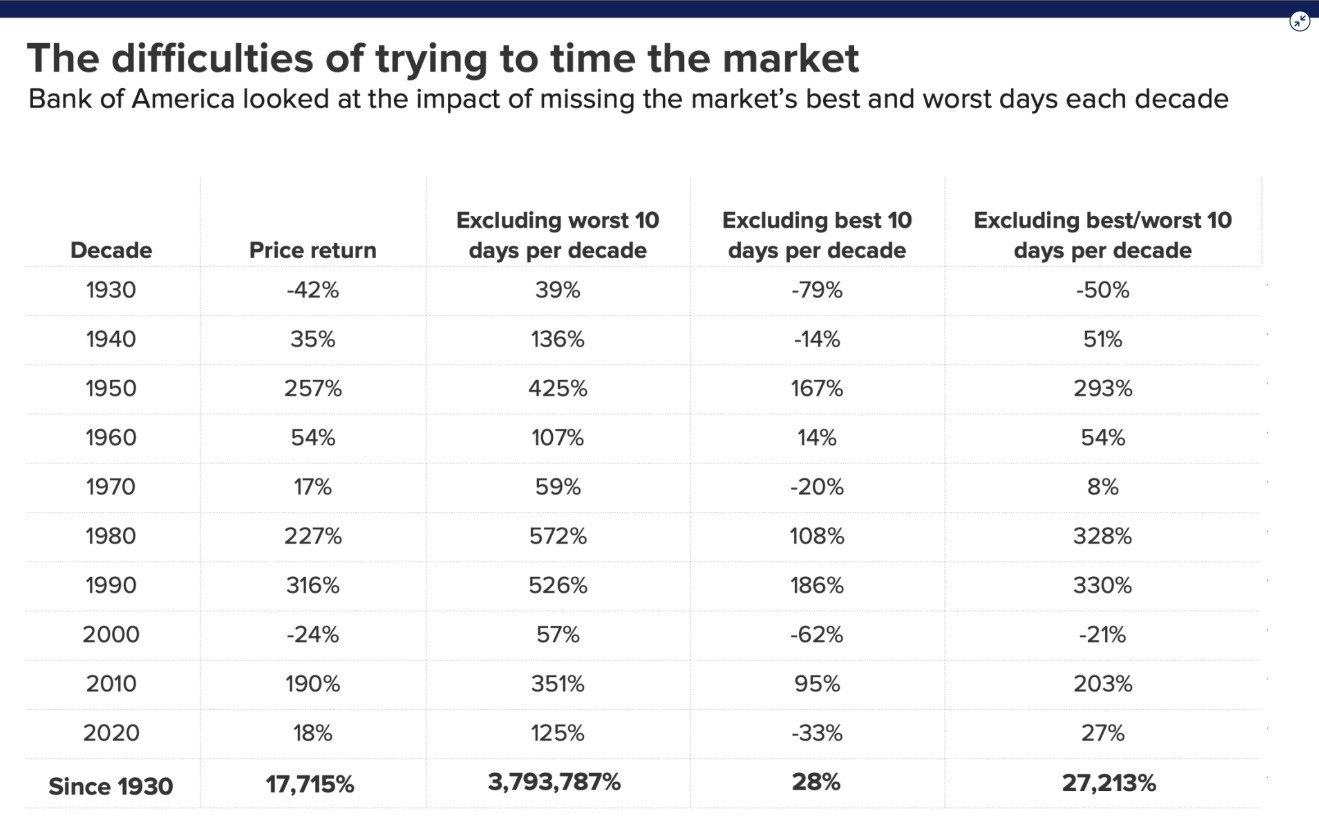Did you panic sell during the latest stock market dip? Here’s when to get back in
- Panic selling often happens during stock market dips, and those who dump investments may later regret their decision.
- However, the bigger issue is many panic sellers fail to re-enter the market, according to research from the Massachusetts Institute of Technology.
- Financial advisors cover what to do after an impulsive sale and how to decide when to re-enter the market.

![]()
Panic selling often happens during stock market dips, and those who dump investments may later regret their decision.
The bigger issue, however, is getting back into the market after a “freak out,” according to research from the Massachusetts Institute of Technology.
“Panic selling is predictable,” said co-author Chi Heem Wong, researcher at MIT, and there are trends among those who dump assets during volatile periods.
Men who are over age 45, or married with children or say they have “excellent investment experience or knowledge” are more likely to panic sell during stock market dips, research shows.
“It’s pretty consistent over time that people with certain attributes tend to panic sell more often than others,” Wong said.
While the research didn’t examine why certain investors are more prone to impulsive sell-offs, they found another alarming trend: Many panic sellers don’t reinvest after going to cash.
More than 30% of investors who panic-sold assets after previous downturns never got back into the stock market, as of Dec. 31, 2015, the paper found.

It’s a problem because those who leave the stock market and don’t re-enter miss out on the recovery. In fact, the best returns may follow some of the biggest dips, according to research from Bank of America.
Since 1930, missing the S&P 500′s 10 best-performing days every decade led to a total return of 28%. However, someone who stayed invested through the ups and downs may have a 17,715% return, the company found.
“The worst thing that you can do is let the mistake of selling at the wrong time hold you back from participating in some of the gains in the future,” said certified financial planner Jake Northrup, founder of Experience Your Wealth in Bristol, Rhode Island.
Why the panic sale happened
Before crafting a plan to re-enter the stock market, experts say it’s essential to explore the reasons why the panic sale may have happened.
First, panic sellers may want to reflect on the event, their thought process, feelings and what they can learn from it, said Northrup.
“Diving a little bit deeper, was it the volatility that really impacted you?” he asked. “If so, maybe take a harder look at your risk tolerance.”
For example, if someone can’t stomach market swings, they may want to reconsider their asset allocation, perhaps pivoting to less stock exposure, depending on their situation, he said.
But they need to ask themselves if there’s been a change in their core values, goals and reasons for investing. If the answer is no, they may not need to shift their investing strategy, Northrup said.
Someone who panic sells may also have a near-term need, which may have amplified their fear, said Teresa Bailey, CFP and wealth strategist at Waddell & Associates in Nashville, Tennessee.
How to re-enter the stock market
While getting back into the market may pay off long-term, experts say panic sellers often feel anxious about when to reinvest.
“You have to be right twice,” said Bailey, as it’s difficult to know when to sell and re-enter the market.
“Typically, emotion is amplified around getting back in because you don’t want to make a second mistake,” she said.
Typically, emotion is amplified around getting back in because you don’t want to make a second mistake.Teresa BaileyWEALTH STRATEGIST AT WADDELL & ASSOCIATES
Some panic sellers wait for assets to decline again before re-entering, which may only extend their time out of the market, Bailey said. However, if they cashed out based on a short-term news event, it’s important to jump back in.
The most common strategy is dollar-cost averaging, where someone puts their money back to work by investing at set intervals over time.
While research shows investing a lump sum sooner may offer higher returns, dollar-cost averaging may help prevent emotional re-investment decisions.
“If someone has panic sold, they might have a tendency to be very emotional with investing,” Northrup said.
“It can be really challenging if someone is scarred from some of the volatility and then missing out on some of the gains that they could have had,” he said.
Trying a combination approach
Investors may also combine dollar-cost averaging with a lump-sum approach, Bailey said, which may need professional guidance.
For example, they may reinvest every week for eight to 10 weeks, and deploy a larger amount if the market dips during that period, she said.
The tactic may allow someone to speed up their timeline to reinvest and get back in at a lower point.
But regardless of the strategy, it’s important to try and learn from previous mistakes and stick with the long-term investing plan.
“Over time, data shows if you stay invested your pot of money will grow,” Bailey said.
Correction: An earlier version of this story mischaracterized a type of investor prone to panic selling.
source article: https://www.cnbc.com/2021/09/25/did-you-panic-sell-during-the-latest-stock-market-dip-heres-when-to-get-back-in.html
complimentary download Riding Market Highs to pair with this article
Riding Market Highs (GRA BLOG)
